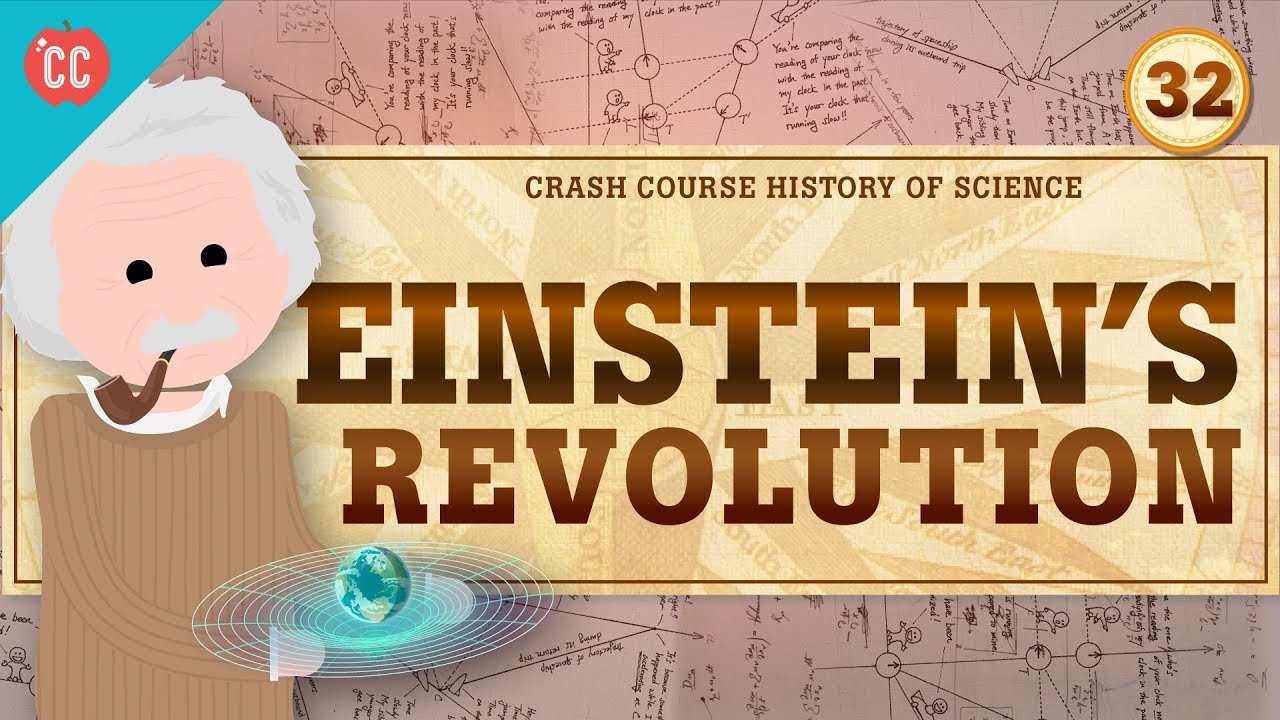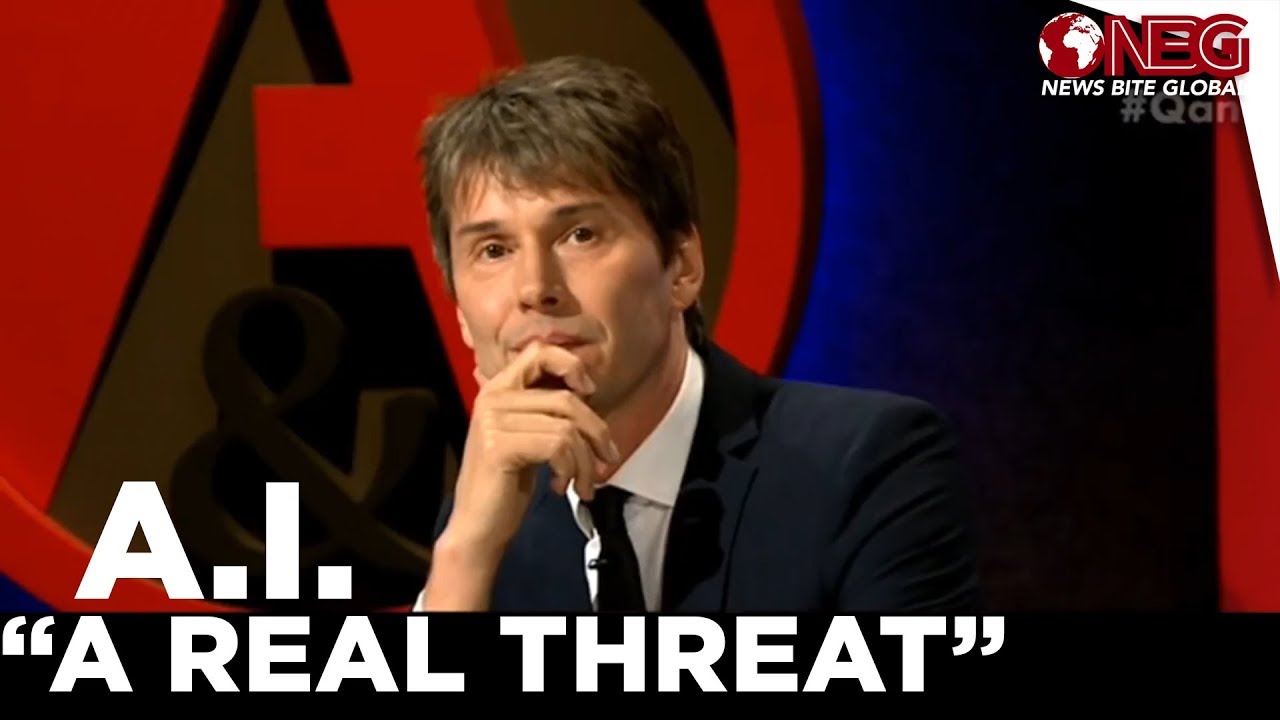CrashCourse
There was physics before Einstein in the same way that there was biology before Darwin. Einstein didn’t just add some new ideas to physics. And he didn’t just add a unifying framework for doing physics, like Newton. Einstein took what people thought was physics, turned it upside down, then turned it inside out.
***
Crash Course is on Patreon! You can support us directly by signing up at http://www.patreon.com/crashcourse
Thanks to the following Patrons for their generous monthly contributions that help keep Crash Course free for everyone forever:
Eric Prestemon, Sam Buck, Mark Brouwer, Naman Goel, Patrick Wiener II, Nathan Catchings, Efrain R. Pedroza, Brandon Westmoreland, dorsey, Indika Siriwardena, James Hughes, Kenneth F Penttinen, Trevin Beattie, Satya Ridhima Parvathaneni, Erika & Alexa Saur, Glenn Elliott, Justin Zingsheim, Jessica Wode, Kathrin Benoit, Tom Trval, Jason Saslow, Nathan Taylor, Brian Thomas Gossett, Khaled El Shalakany, SR Foxley, Yasenia Cruz, Eric Koslow, Caleb Weeks, Tim Curwick, D.A. Noe, Shawn Arnold, Malcolm Callis, Advait Shinde, William McGraw, Andrei Krishkevich, Rachel Bright, Jirat, Ian Dundore
—
Want to find Crash Course elsewhere on the internet?
Facebook – http://www.facebook.com/YouTubeCrashCourse
Twitter – http://www.twitter.com/TheCrashCourse
Tumblr – http://thecrashcourse.tumblr.com
Support Crash Course on Patreon: http://patreon.com/crashcourse
CC Kids: http://www.youtube.com/crashcoursekids
Source




Part of the Mcihelson Morley Experiment was to answer the question regarding the existence of an ether. JJ Thomson, Marie Curie, Ernest Rutherford independently made discoveries regarding the particles from the atom and from the nucleus that made them the stars of the season in the field of Physics. Later the names of Becquerel, Hertz, Planck joined the list and soon after, Albert Einstein shook the world with his new theory regarding relativity.
As a New Jersian and original Princetonian (and big ol nerd), my parents liked to remind me that Einstein didn't wear socks because he thought they were a waste of time. All the police in Princeton also knew him because he kept forgetting where he lived and needed directions back to his house!
Einstein's role to the development of Quantum Mechanics was crucial!! More than any other and certainly more than Plank and Bohr. 1. In 1905, Einstein proposed the existence of the photon, an elementary particle associated with electromagnetic radiation (light), which was the foundation of quantum theory. 2. In 1907 and again in 1911, Einstein developed the first quantum theory of specific heats by generalizing Planck's law. 3. In 1918, Einstein developed a general theory of the process by which atoms emit and absorb electromagnetic radiation (his A and B coefficients), which is the basis of lasers (stimulated emission) and shaped the development of modern quantum electrodynamics, the best-validated physical theory at present. 4. In 1924, together with Satyendra Nath Bose, Einstein developed the theory of Bose–Einstein statistics and Bose–Einstein condensates, which form the basis for superfluidity, superconductivity, and other phenomena. 5. Even His criticism on Quantum Mechanics was beneficial for us since he pointed out things about QM that others couldn't see, like quantum entanglement (spooky action at a disctance). In 1935, together with Boris Podolsky and Nathan Rosen, Einstein put forward what is now known as the EPR paradox, and argued that the quantum-mechanical wave function must be an incomplete description of the physical world. For those who are interested in this, I suggest this article: Einstein’s Contributions to Quantum Theory∗
Norbert Straumann
Institute for Theoretical Physics
University of Zurich, Switzerland ¨
February 2, 2008
I like that quote about our tech advances being comparable to an axe in the hands of a psychopath. Very true.
What wrong with living in Germany?
Significant digit
The last decimal point
Einstein could not get a job – because he pissed off his professors. They would not write recommendations for the poor guy.
Shock: 4 years of COLLEGE, no Ph.d.!
Heisenberg gets pulled over by a policeman. The policeman says, “Sir, are you aware you were going 100 in an 80 zone?” Heisenberg replies, “Great! Now I don’t know where I am!”
Good video, only missed one thing: Nikola Tesla proved the existence of the aether.
Changes argument to:
1. Michelson-Morley Interferometer Experiment of 1887 proves that the heliocentric, spherical model is inconsistent with the existence of the aether
2. Einstein explains away the aether over the course of 3 papers published from 1905-1915
3. Tesla (along with Maxwell and Faraday) proved that Einstein's musings are not rooted in proven experimentation like that done by the fathers of the modern electrical grid who engineered several components which require the aether to function at all
C. If the aether can be proven to exist, then the Earth is actually a Flat Motionless Geocentric Disk with a Dome on top that rotates around the Earth (with the 7 planets of the solar system all moving independent of the dome/star movement–in Latin "planet" means "moving star")
This is by far the most conclusive proof which nullifies the existence of the globe model. The only other theory that exists which includes both an aether and the globe in light of Michelson-Morley is the "ether drag" theory which can be safely dismissed using the findings from G.B. Airy's 1871 experiment nicknamed "Airy's Failure" (notice how every experiment that proves something related to the classical models of the world like geocentricism is labeled a "failure" by mainstream academia rather than unbiasedly considered as a compelling piece of evidence to the contrary on an unsettled issue). In Airy's Failure, stellar aberration is analyzed to inadvertently prove it is the universe which revolves around the Earth, not the Earth spiraling through the infinite ever expanding vacuum of space. Using this evidence, we can conclusively dismiss the theory of "ether drag" and confirm that the Earth is in actuality a Flat Motionless Geocentric Disk with a rotating dome affixed above it.
The magnetic poles are structured like that of a disk magnet, not like that of a magnet that does not actually exist in nature (iron rod on axis of suspended spinning sphere). Water always fills a container and finds its level after settling; that is to say that water fills the container to form a flat perfectly level surface after settling. Using this fact, the oceans would make far more sense if they behaved like water in every other circumstance, and the water that composed them found its level rather than curving to stick to a spinning sphere. Look up what happens to a tennis ball if you spin it quickly, does the water stay attached? Gravity is identified as the force that pulls everything into the oblate spheroid that is earth, and despite not being strong enough to overcome the laws of density and buoyancy which govern the type of objects to sink and rise relative to others (allows balloon to float away bc it is less dense, and for us to float to top of pool of water bc we are less dense while brick falls to the bottom because it is more dense than both water and air), it is still somehow able to keep all of the water from flying off the spinning ball that is rotating at 3x the speed of sound. Water doesn't even pull and collect around the equator more than the rest of the ball like one would expect as a result of the centrifugal divergent force acting upon the water…somehow gravity is just so strong it can keep everything in place……..well everything but that balloon.
Fact check everything I've said. I dare you.
Wonderful! You inspire me to learn more.
Hey, where are the BROWN eye glasses? I like those better.
2:50 I think it's wavelenghts BELOW a certain threshold. uv light produces electrons while infrared doesnt.
Please keep going until the building of LHC
Who can forget the famous follow-on: E = m(a² + b²) ;-).
is this greens brother or something?
HEY!!! new glasses!!!
Technically Einstein was a professor at the Institute of Advanced Study, not Princeton University per se, although he did teach lectures there.
Einstein = Terrorist ????
been binge watching the videos
They finished :'( .
I was like WTF!
Then saw the time stamp.
Oh last video just 2 weeks ago.
Now waiting for the new videos.
Great work keep it up!
2:40 "the heat emited by dark objects when they absorve light"
Is this correct?
I might be wrong but isn't this description misleading? Since the heat emited itself is light, they are not necessarly dark and because the're other ways to get hot without absorving light?
Einstein da GOAT
I don't want to be that guy… but both at the time and now a days Einstein gets too much attention and credit. Unfortunately, because he was immediately famous then as well, retroactive analysis cannot ignore the disproportionate impact he had at the time, thus perhaps perpetuating that mythos. Also, quantum physics isn't weird. Humans are weird for not getting it (and telling people it is weird and not something that they can understand/see as the real truth of the world doesn't help fix that paradigm). But that is a science education debate (like why it is quite arguably bad practice to teach students the 'octect rule').
Is there any way to come visit yall's studio in Montana? I'm a huge fan who lives in Mount vernon, WA.
10:15 So…. when is "next time"?
stephen hawking the greatest scientist after Einstein
very good criticism
How did he figure all of this out, and how did it change everything so fast? Wasn't he pretty much a nobody in Europe when he published his thesises?
Einstein was a bloody heretic.
Everyone knows that Mankind travels faster than light by traveling through the warp, nuzzled deep inside a Gellar field, guided by the holy light of the Astronomican.
In the grimdark equations of the math future, there are only more questions. There is no peace among the disciplines, only an eternity of impossible theory and dogmatic principles. And the laughter of thirsting scientists.
E=Blam^2
Aether
The pronunciation of Schrödinger is shrödinger, not shrodinjer.
Well, Einstein's view about QM my ultimately turn out to be right, but only with the cost that the speed of light may not be a limit for all types of happenings after all.
Intro is WAY too loud ..
Measurement Problem.
You're very wrong about the part with the famous "God does not play dice" quote. Einstein was objecting to the idea that the position of a particle is truly random, and not governed by some deterministic process. The problem is that "uncertainty" sounds like "randomness," but that's really a misnomer. Uncertainty would be better called "spread-out-ness." Einstein was not objecting to this spread-out-ness; that kind of uncertainty is a property of waves and is present in classical theories like GR. The idea that Einstein is objecting to is the idea that the waves in question aren't "real" in themselves but instead represent probabilities of truly random (non-deterministic) outcomes, and in particular, the way of interpreting this randomness that became known as "the Copenhagen interpretation."
Tag yourself:
I'm the howling void.
There is a chain with objects at both ends that are blocking lights L1 and L2. Like this….
L1 O—————————O L2
Ok. Now the objects will lower in order to release the light from L1 and L2. For someone in the mid-point of the distance between L1 and L2 and who sees the light from L1 and L2 simultaneously, the objects will lower simultaneously and the chain remains intact. Like this….
L1 L2
O—————————O
For someone moving at a high speed towards L2 from L1, the object in front of L2 will lower before the object in front of L1. So we get this…
L1 O———– L2
——————–O
So for the stationary observer with respect to the chain and lights the chain remains intact because both ends lower at the same time. For the moving observer the chain breaks because the end at L2 lowers before the end at L1 which lengthens the distance that the chain must extend.
So we have a paradox. A chain can't be both broken and intact at the same time.
There are 3 lights in the form of a triangle…
A, B, and C are lights. S1, S2, S3 are spaceships.
B
S1 S2
A S3 C
S1 is moving from A towards B. S2 is moving from B towards C. S3 is moving from C towards A. A, B, and C flash simultaneously in their frame of reference. So in the frame of reference of S3, A flashes first followed by C flashing. In the frame of reference of S2, C flashes first followed by B flashing. In the frame of reference of S1, B flashes first followed by A flashing. So the sequence of flashing is A, C, B, A. But wait! A flashed first. How can it flash last? How can A flash both first and last?
I watched all of this course in like two days, its so interesting! Thank u and i can’t wait to see more xoxo
Einstein was a socialist
yeah I know a bit random fact.